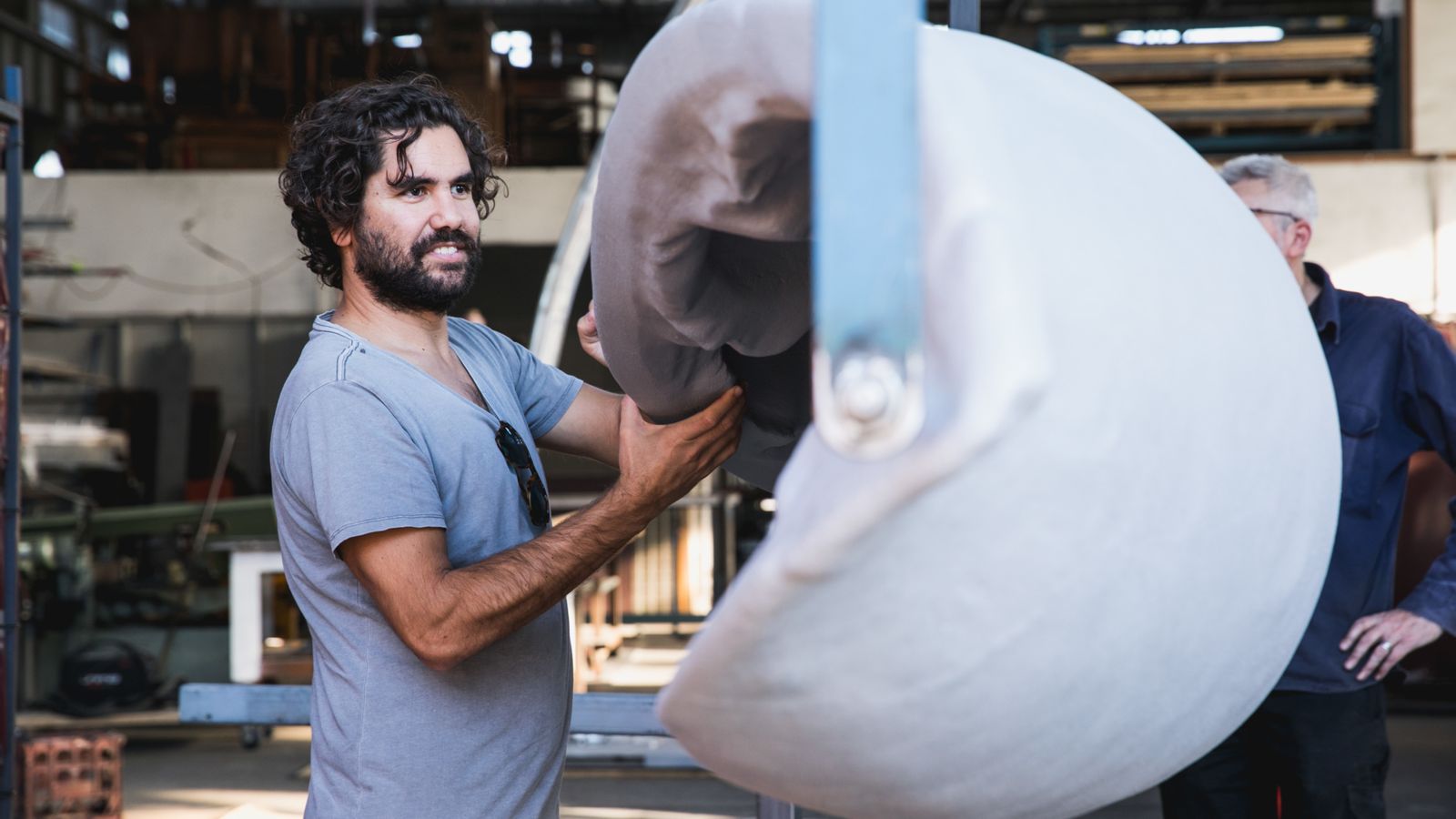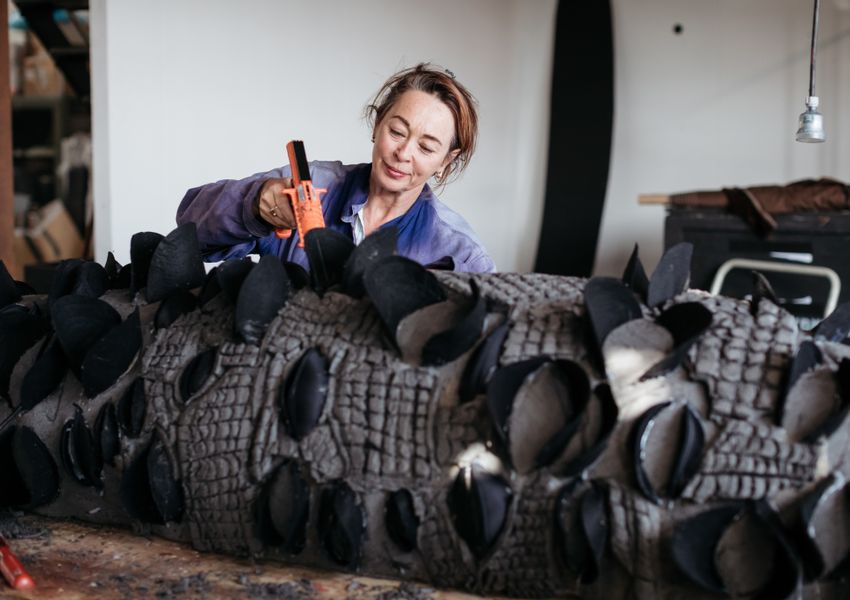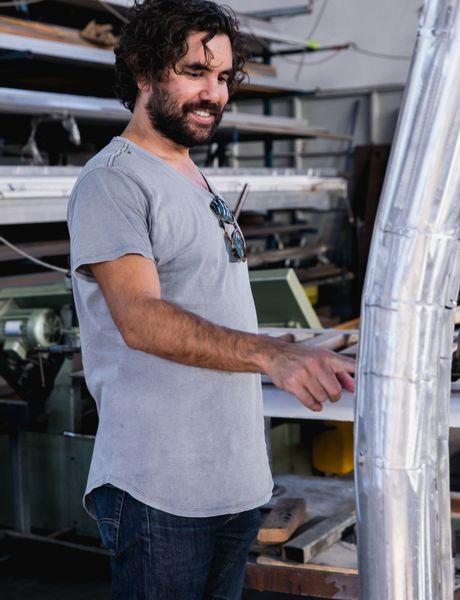
Like Bangarra’s dancers, Bangarra’s creative team is a tight-knit ensemble. Here, head of design Jacob Nash explores collaboration, inspiration, and how Bangarra creates its rich visual universe.
Dark Emu is your sixth collaboration with Stephen Page for Bangarra. What does that collaboration look like in practice?
The creative process always begins with discovery, because Stephen doesn’t have the answers then, and I don’t either. There are always things he’ll repeat in conversations, things that emerge as important, and it’s a case of interpreting that in the designs. You try and turn it into a visual sentence, into a visual world, but you never want to land on something too early. You need to know all the ingredients, throw them up in the air, and see what sticks.
What are the driving visual ideas behind Dark Emu?
We had a conversation about what it would look like if the sky was looking at the earth, and the earth respected the sky. We imagined if we all respected the sky around us, the atmosphere, space, the stars, the moons, and what that would look like as a homage to the land and its people. The next question was how we’d create that world, and how people would move through it.
How important is colour in Bangarra’s works?
Colour is important, but Bangarra really focuses on negative space through black as well: anything you put on stage becomes quite focused. We go for strong, emblematic images. When we do use colour, it comes from a place of knowing; for instance we’re choosing red because it’s the colour of ochre found in
the earth.
Where do you seek inspiration?
I photograph a lot, and I try to connect with a place. I like to stand on the Country where a story comes from, and get a grounded emotional response within my own body. From there, you open your eyes, and start looking at what’s around you, what’s in an environment, and how it changes through the day. Inspiration may come from the tonal qualities of light hitting
a surface, and you might explode that out to the most contemporary reference possible.
Are there any motifs that occur regularly in your work, especially your work for Bangarra?
You don’t see a lot of straight lines. You don’t see a lot of straight lines in the dancers’ movements either, and if you do, it’s a deliberate choreographic design based on the story. I think we’re surrounded by things that don’t let us dream, visually. I try to find the magic in the unstructured; give people the ability to imagine and breathe, to see things in a way they don’t usually.
Is there anything that might surprise people about Bangarra’s designs, especially people who haven’t experienced the company before?
We’re called Bangarra Dance Theatre because we combine visual art, design, sculpture, music and dance: we’re always trying to break through the Western norm of what design is. We’re playing within that theatrical box, but we’re always trying to break the rules, or reinterpret them so we re-own the world we’re creating.



-
Set Design
Jacob Nash
-
Set Design